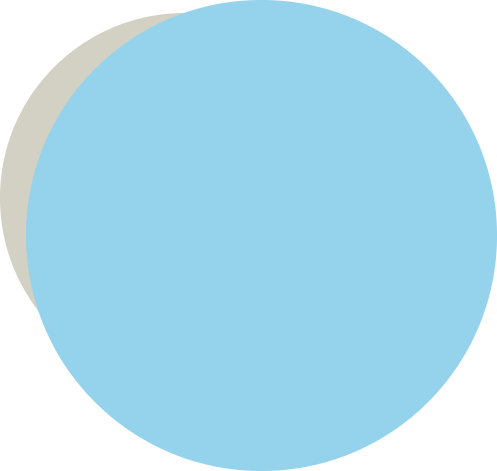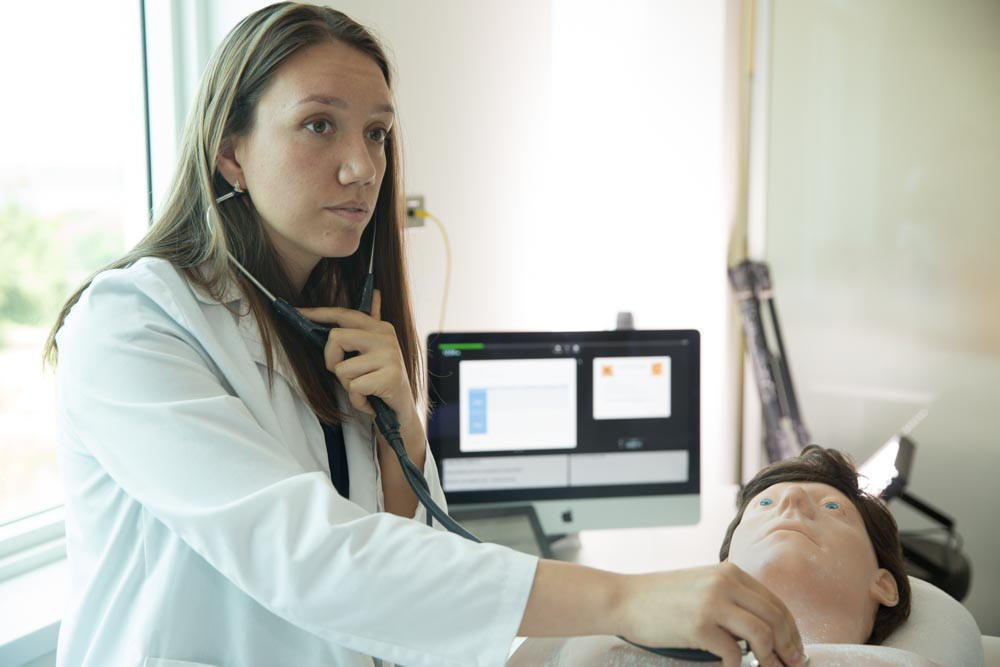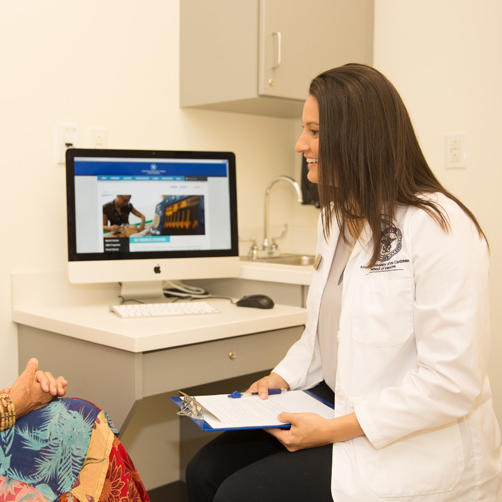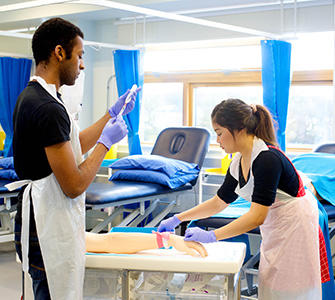Like many aspiring physicians, you may be inspired to become a doctor because you are determined to invent a better future for patients and community members. If you are social, attentive, trustworthy, and like interacting with people, chances are you are drawn to primary care, which generally includes internal medicine, family medicine, and pediatrics. As a primary care physician, you can build meaningful partnerships with your patients to personalize their care and work with them on overall wellness.
After considering the 160+ specialties and subspecialties that you can pursue after graduating from medical school, you have narrowed it down to primary care, but you may still have the lingering question: What is the difference between family medicine and internal medicine?
“Internal medicine and family medicine can be very similar and there is a lot of overlap,” says Derek Anderson, MD, FAAFP Lead Clinical Chair and Clinical Chair, Family Medicine for American University of the Caribbean School of Medicine (AUC). We turned to Dr. Anderson, a practicing primary care team physician for the Louisiana State University athletic department, to help explain the scope and difference between family medicine and internal medicine.
“Both family medicine and internal medicine are primary care specialties,” he says. “Family physicians treat patients of all ages, from birth to death, and internal medicine doctors treat adults, 18 years or older.”
Internal Medicine Vs. Family Medicine
The differences between family medicine and internal medicine also involve the focus, training, and patient care, according to the American College of Physicians (ACP).
The length of residency training for both is three years, but internal medicine focuses only on adults. To treat children, an internist needs pediatric training along with their internal medicine training. Internists are referred to by the ACP as “doctors for adults.”
Internal medicine training focuses on common general medical conditions, but also includes significant experience in neurology as well as such internal medicine subspecialties as endocrinology, rheumatology, and infectious diseases. Medical students must also gain adequate experience in psychiatry, dermatology, ophthalmology, office gynecology, otorhinolaryngology, non-operative orthopedics, palliative medicine, sleep medicine, geriatrics, and rehabilitation medicine to comprehensively care for adults, according to the ACP.
Training in family medicine and internal medicine takes place in both the outpatient and inpatient settings, but the emphasis is different for each. Family medicine involves more outpatient care while internal medicine has more of an emphasis on inpatient care.
At least one year of internal medicine training must involve caring for hospitalized patients, with training in intensive/critical care settings. Most training programs require more than one year of hospital-based work with additional training on such inpatient subspecialty services as cardiology, hematology-oncology, and gastroenterology. After residency, internal medicine doctors can choose to become primary care internal medicine doctors or go on to become specialists by completing a fellowship.
Family physicians complete extensive training beyond medical school — including a three-year residency and in-depth training — in order to provide the best possible patient care from birth to death. Family doctors can then pursue fellowships and certificates of added qualifications in such fields as adolescent medicine, maternal-child health, sports medicine, geriatrics, and faculty development, while still being a primary care doctor.
Your specialty does not necessarily determine your clinical setting (that is more a function of your specific job), but there are some generalizations. As examples of internal medicine vs. family medicine job settings, internists work in the inpatient hospital setting more often than family doctors, and family doctors often work in the outpatient setting, including home visits.
| Internal Medicine | Family Medicine | |
|---|---|---|
| Age of patients | 18 to 100+ | Birth to 100+ |
| Practice emphasis | Prevent, diagnose, and treat illnesses in adults with a focus on organs and internal systems. | Trained to manage the entire spectrum of medical issues in people of all ages |
| Approach | Expertise in diagnosing a variety of diseases that commonly affect adults, and in managing complex conditions may affect an individual. | Provide whole-person care, with an emphasis on outpatient medicine, continuity of care, health, maintenance, and disease prevention. |
| Practice Setting | Inpatient and outpatient | Primarily outpatient |
| Training | 3-years residency; training focuses on common medical conditions, but also includes experiences in each of the internal medicine subspecialities and neurology. At least one year of training must include caring for hospitalized patients. | 3-years residency; training typically based in outpatient centers, with at least 6 months inpatient hospital experience. Additional requirements include training in obstetrics and gynecology. |
What Is an Internal Medicine Doctor?
Internal medicine vs. family medicine: What sets them apart? Exactly what is internal medicine? Because internal medicine education focuses on adults and includes experience in both general medicine and the internal medicine subspecialties, training in adult medical issues is comprehensive and deep. The general and subspecialty nature of training allows internists to develop expertise in diagnosing the wide variety of diseases that commonly affect adults as well as in managing complex medical situations where multiple conditions may affect a single individual, according to the ACP.
Internists follow patients over the course of their lives — from young adulthood through old age — and establish long relationships with their patients, says the ACP. Internal medicine physicians are specially trained to solve puzzling diagnostic problems and can handle severe chronic illnesses and situations where several different illnesses may strike at the same time.
Internists are well prepared to provide primary care to adults through their outpatient continuity experience during training, particularly for complicated medical cases. Their training also enables them to effectively interact with internal medicine subspecialty colleagues in co-managing complex patients (such as those with organ transplants, cancer, or autoimmune disease) and easily managing the transitions from outpatient to inpatient settings (and vice versa) for patients who require hospitalization.
What Is Family Medicine?
Internal medicine vs. family medicine: What are the key differentiators? As its name suggests, family medicine provides medical care for families, and often these physicians treat multiple generations of family members from newborns to the elderly.
“Family medicine is very holistic in that you can form a close relationship with a patient and generations of their family — treating them at any stage of their lifetimes,” says Dr. Anderson. “A primary care physician usually serves as the patient's first point of entry into the healthcare system and the doctor they turn to first for their needed healthcare services.”
A family physician works with patients as partners in their healthcare, helping them stay healthy, managing such chronic conditions as diabetes and high blood pressure, and treating such acute conditions as neck pain and shingles. Family physicians walk alongside patients through all of life’s stages, from birth through adolescence to childbirth, midlife, and eldercare. They are wellness-centered, working with patients to maintain good health and to prevent disease. In addition, they collaborate with other experts when specialized care is needed, according to the American Academy of Family Physicians (AAFP).
The range of influence for family physicians is broad, says the AAFP. The range includes:
- Caring for patients regardless of age or health condition, sustaining an enduring and trusting relationship
- Understanding community-level factors and social determinants of health
- Serving as a patient's first contact for health concerns
- Navigating the health care system with patients, including specialist and hospital care coordination and follow-up
- Using data and technology to coordinate services and enhance care
- Considering the impact of health on a patient’s family
- Providing care for underserved rural and urban populations
Family medicine physicians are skilled experts, patient advocates, problem-solvers, and medical team leaders, according to the AAFP. Choosing between internal medicine and family medicine is a highly personal decision. These comparisons should help guide you to take the next step in your medical career. Ready to work in the medical field? Learn more about AUC’s MD program here.
Related resources:





